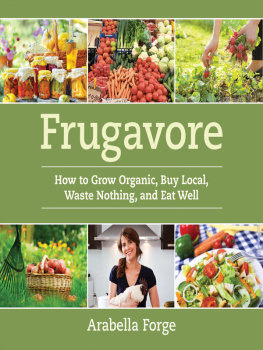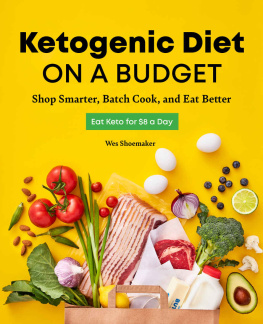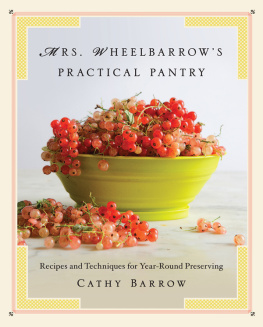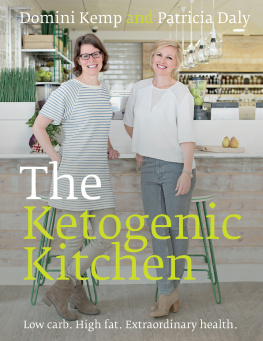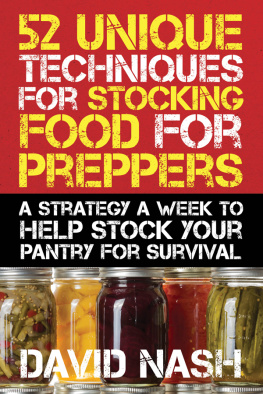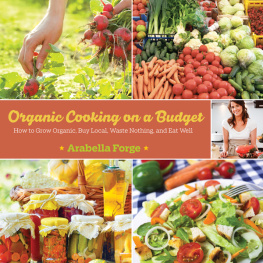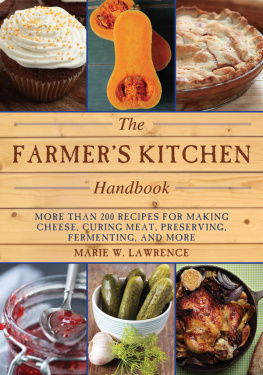frugavore
frugavore
HOW TO GROW ORGANIC, BUY LOCAL,
WASTE NOTHING, AND EAT WELL
Arabella Forge
with illustrations by Genna Campton

Skyhorse Publishing
Copyright 2011 by Arabella Forge
All Rights Reserved. No part of this book may be reproduced in any manner without the express written consent of the publisher, except in the case of brief excerpts in critical reviews or articles. All inquiries should be addressed to Skyhorse Publishing, 307 West 36th Street, 11th Floor, New York, NY 10018.
Skyhorse Publishing books may be purchased in bulk at special discounts for sales promotion, corporate gifts, fund-raising, or educational purposes. Special editions can also be created to specifications. For details, contact the Special Sales Department, Skyhorse Publishing, 307 West 36th Street, 11th Floor, New York, NY 10018 or info@skyhorsepublishing.com.
Skyhorse and Skyhorse Publishing are registered trademarks of Skyhorse Publishing, Inc., a Delaware corporation.
www.skyhorsepublishing.com
10 9 8 7 6 5 4 3 2 1
Library of Congress Cataloging-in-Publication Data is available on file. ISBN: 978-1-61608-408-0
Printed in China
Contents
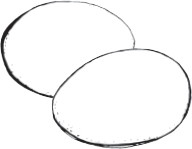
STOCKING YOUR PANTRY
Garden salad
...
Leek & sour cream omelet
...
Poultry Basics
Chicken & leek pie
...
Bean & green soup
...
Sweet potato hummus
...
Oxtail stew with apples & spices
Baked meatballs with nutmeg
...
Pickled fish
...
Hearty brown rice
...
Lemon curd cheese
...
FATS
Peachy mint salad
...
I STARTED WRITING THIS BOOK AFTER I found myself trying to juggle two seemingly opposing things: I wanted to provide good, nutritious food for myself and my family, while also watching my dollars when I went to the supermarket.
At first, like many people today, I took steps toward healthy eating by shopping at organic food stores and occasionally at the local farmers market. Where possible, I tried to buy organic meat, fresh seafood, and good quality fruit and vegetables. Living in a busy household, I was meticulous about throwing things out when they got moldy or stale. This made life expensive. And, looking back on it, more than a little wasteful.
Eventually, though, I started to feel frustrated. I was fed up with the high prices at small organic stores, and by the poor quality of the produce at my local supermarket. I started to look for other ways to access good food, and I began to live and cook a lot more frugally. I still wanted to buy the most nutritious food I could, and to enjoy good quality meat, fish, and vegetables. But I learned to shop more wisely, to make the most of what I bought, to waste less, and to connect more closely to where my food came from.
Along the way, more than a few changes took place at our house. The front lawn was taken up and replaced with a veggie patch (much to the horror of anyone who liked to kick a soccer ball!). We got two little hens and converted an old warehouse container into a henhouse. I also bought a second-hand freezer and started to buy food in bulk when it was in season. As well as saving us money, this made my life much simpler and easier: I always had frozen produce on hand if I needed to whip up dinner in a hurry during the week, and I could easily source fresh vegetables and herbs from the garden.
I also started to ask more questions about the food I bought. I quizzed my local butcher about the cheapest cuts of meat. I scoured the supermarket shelves for low-cost, easy to prepare foods like lentils, chickpeas, and legumes. As I experimented in the kitchen and used my family as guinea pigs, I also read more and more about traditional cooking techniques and peasant-style cuisines. Somewhere along the way I fell upon a word that I soon became very fond of. It was the magic word frugal, meaning to make the most of what we already have and also, wherever possible, to use less. People living off the land have employed frugal cooking and harvesting techniques for millennia. They did so not just to save costs and eliminate waste but also as a means of staying healthy. As I explored new ways of buying and preparing food, this notion of frugality made more and more sense.
As a nutritionist, I was lucky enough to have contacts in the food world, who were a great source of help and advice. Of all of these relationships, by far the most valuable were those with local farmers. From the farm, I could buy meat in bulk, fresh milk, and a wonderful array of other produce. I learned how to use all the thrifty bitspork belly could be cured into bacon, chicken feet could be used to make stock for soup, and extra milk could be turned into homemade cheese or yogurt. By visiting local farms, I also gained a much better understanding of how my food was produced and what was fresh and in season.
In many respects, this approach to food represents a return to traditional peasant ways of eating. Only a few generations ago, almost everyone with a patch of land grew their own vegetables, kept a few chickens, and preserved their own fruit. What you couldnt produce yourself, you could usually find nearby: a neighbor with a lemon tree, a friend with a fresh catch of fish, a local baker selling freshly made loaves. Your diet would reflect what was locally and seasonally abundant, and you would have a clear understanding of where the food on your plate came from. Being a frugavore is all about rediscovering these peasant habits of frugality, returning to simple, fresh, seasonal food and reconnecting with the farm.
Its not just a matter of nostalgia, though: the time is ripe for a more frugal approach to food. We live in an age of profligacy. Never before have we had so much food available, and never before have we wasted so much. Celebrity chefs entertain us with elaborate meals and trendy ingredients, but most of us dont eat the sort of food we see on TV. We buy our food ready-made from the supermarket or as take-out, carry it home in plastic containers, and zap it in the microwave (doing away with any nutrients that managed to survive that far). Most of us have got into the habit of shopping only at supermarkets, and many people dont know how to prepare meals at home from scratch, or dont think they have time. When food is available immediately its easy to take it for granted; its no wonder that around one third of the food we buy is wasted every year.
Many people would like to eat differently but arent sure where to start or dont think they can afford it. There can be a big price discrepancy between quality, chemical-free produce and conventional supermarket fodder. A leg of grass-fed lamb from the local organic butchery is going to cost you a lot more than the no-name equivalent from the supermarket. There are cheaper ways to access good-quality, organic produce, but very few of us know the way to our local farm or how to grow our own vegetables. Thats where this book comes in: as a frugavore, youll be equipped with the skills and knowledge to enjoy the best produce at a much better price. So instead of buying lean, organic chicken breasts at your local organic store, go buy the whole bird (and I mean the whole birdhead and feet included). Use the meat in a roast, keep the leftovers for school sandwiches, and make a good hearty soup with all the bones. You now have three meals instead of one and if you shop at the same places I do, youll probably find that a whole chicken costs about the same as those two skinless fillets. Whats more, as you will learn on the following pages, all those extra bitsthe bones, the heads, and the skinare far better for you than the cardboard-flavored chicken breasts you might be accustomed to.
Next page
